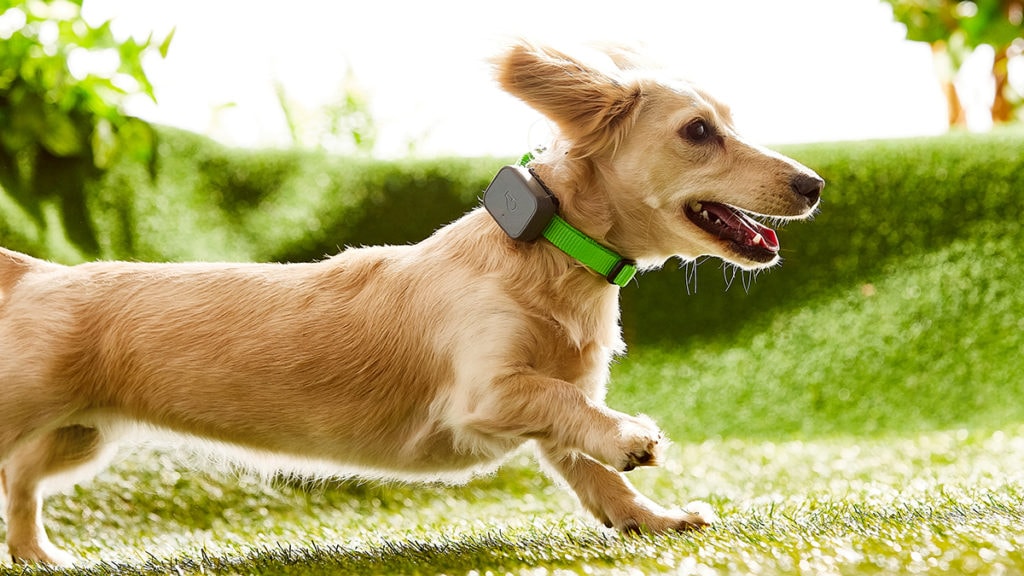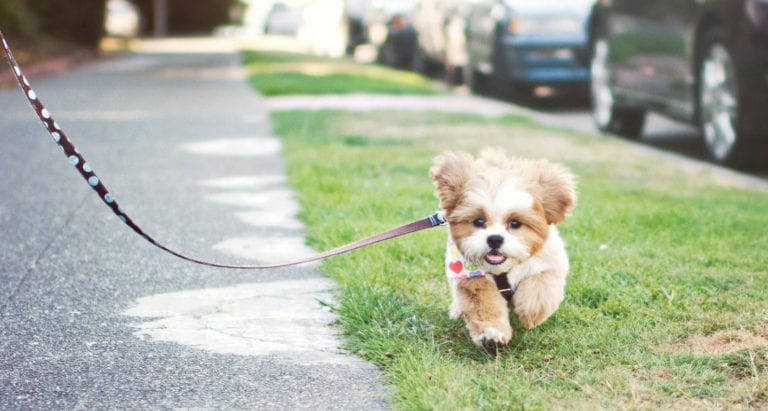Dogs who get regular exercise tend to stay slimmer and healthier throughout their lives. As with humans, staying at a healthy weight means less chance of developing illnesses such as fatty liver disease and arthritis—both common for an overweight dog.
Besides keeping your dog’s weight down and his muscles toned, exercise provides additional benefits for your dog, like burning excess energy and reducing boredom. After all, too much energy and boredom can result in destructive behavior like chewing, digging and barking.
So, how much exercise does a dog needs? Several factors determine whether your dog needs more vigorous exercise or quiet walks down the block. Your dog’s age, breed and overall health come into play when figuring out precisely how much your dog should exercise.
How Much Exercise Does a Dog Need, Really?
Here’s how you can figure out how much exercise needs.
How Age Affects How Much Exercise a Dog Needs
Age is the first thing to consider when trying to figure out how much and what kind of exercise your dog can handle, says Heidi Watkins, DVM, a veterinarian at VCA Airport Irvine Animal Hospital in Costa Mesa, California.
“Young puppies have bursts of energy followed by periods of deep sleep,” Dr. Watkins says. “Letting your puppy play with a toy in the yard until he gets tired and collapses in a pile is usually enough exercise for pups up to 16 weeks of age.”
Older puppies can play for longer periods of time. Some of the best exercises for pups up to 1 year old include playing with other dogs (which also helps socialize them) and chasing a ball.
If you enjoy running and want to take your dog for a jog with you, wait until he’s at least 18 months old, Dr. Watkins says. This gives his joints and bones time to grow and mature so they can handle hard exercise without injury, she says.
While exercise is a good way to tire out your pup, too much exercise can be hard on his growing body. So, consider ways to exercise your dog’s mind as well.
Using food puzzles and dog interactive toys can help keep your canine companion mentally stimulated, as can exposing him to new people and situations once he’s had his second round of shots by 17 weeks of age. You’ll be amazed at how mental stimulation tires pups as effectively as physical exercise!
Senior dogs, at the other end of the age spectrum, need exercise, too. Depending on his age and health, you may need to keep his workouts brief and easy.
Older dogs with arthritis need gentle exercise, Dr. Watkins says. Short, slow and frequent walks can help an older dog’s muscles remain limber and joints stay mobile, while keeping his mind alert. Regular activity also improves an older dog’s overall quality of life.
How Breed Affects Dog Exercise Needs
Whether your dog is a purebred or a mix of breeds, his ancestry determines his body type and energy level. Breeds developed to spend a lot of time on the move have greater exercise requirements than breeds designed for less activity.
As a general rule, herding breeds, like Border Collies and German Shepherds, and terriers, like Jack Russells and Fox Terriers, tend to require a lot of exercise. Hound breeds, like Basset Hounds, and toy breeds, like Pugs, are less active. That said, individual dogs within a breed might be more mellow or active than other dogs of the same breed.
For mixed breeds, a dog’s predominant genetics typically dictate his exercise needs. If your dog has a lot of terrier ancestry, he probably will be an active dog. If he’s part Bulldog and acts like one, he will be on the less-active side.
The best way to know if your dog needs a lot of exercise is to research the breed’s history. If the breed was developed to hunt all day long, herd sheep for hours on end or patrol large properties and guard against intruders, your dog was designed to get plenty of exercise. On the other hand, if your dog comes from a breed whose main job was to sit on someone’s lap or methodically track a scent through the woods once in a while, you probably don’t have an active dog.
When deciding what kind of exercise to provide your dog, consider breed-specific activities. Sports like herding, flyball, agility and barn hunt are great for dogs with the working instincts associated with their breed.
How Health Affects Dog Exercise Needs
Before starting your dog on an exercise regimen, get him checked out by your veterinarian. This especially matters with an overweight dog.
“Your vet will exam your dog and let you know if there are any health issues or areas of pain that might make exercise unsafe or uncomfortable for him,” Dr. Watkins says. “Depending on what’s wrong, the vet can provide treatment and let you know how much and what kind of exercise your dog can tolerate.”
Whether you play with your pup, jog with him or take him on a hike, pay close attention to your dog’s attitude and body language. If he lags behind or refuses to move, he’s either tired or in pain. Don’t force your dog to exercise if he does not feel up to it.
Also give your dog time to slowly work up to the exercise goal you have in mind. As with humans, dogs need time to build up their muscle strength and stamina. If your ultimate goal is a 10-mile hike with your dog, start with one mile and gradually ease your way up.
Taking these factors into consideration can give you a good idea of how much exercise your pup needs. But you should always speak with a veterinarian before starting your dog on an exercise program so you can make sure he’s on the right track.
By: Audrey Pavia
Featured Image: Chewy Studios
Share:










